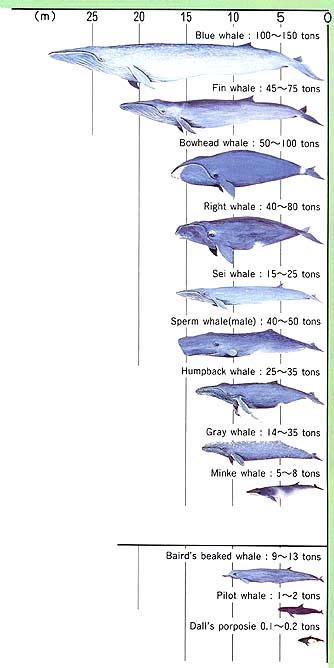Whale species and their management

Illustrator: Mineo Takagi
Species under IWC management
The 13 species subject to IWC management are listed in the Annex of Nomenclature of the Final Act of the 1946 International Convention for the Regulation of Whaling. The species listed are the sperm whale, the bottlenose whale, and the baleen whales. Among these are:
The blue whale: This is the largest mammal on earth, with a maximum length of about 34 m. It reaches maturity at about 10 years of age and gives birth once every two or three years.
The fin whale: Though not as large as the blue whale, it reaches maturity at about the same age, and gives birth at the same interval as the blue whale.
The minke whale: This is the second smallest of the baleen whales (only the pigmy right whale is smaller), with a maximum length of 11 m. It is more fertile than other large baleen whales, reaching maturity at between 6 and 7 years of age and calving almost every year.
Species not under IWC management
Of the many species of cetaceans which are not managed by the IWC, the three of principal commercial interest to Japan are the Baird's beaked whale, the pilot whale and the Dall's porpoise.
Back to Index
